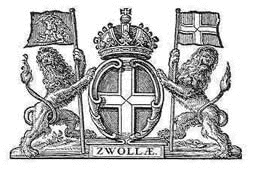


If the postage was not paid in advance by the sender, the letter in question was charged with postage at the addressee (Postal Act of 12 April 1850, in effect 1 September 1850). After the introduction of the use of postage stamps on 1 January 1852, it could happen that a sender had stuck too little postage. Then the addressee had to pay the remainder. In the first years that happened without a penalty.

5 cents 1852 issue on a letter from Zwolle via Post Office Steenwijk (datestamp on reverse) to Giethoorn, 15 February 1856. The sender may have thought that Giethoorn fell under Post Office Zwolle and therefore only owed 5 cents within the Zwolle resort. But Giethoorn fell under the Steenwijk Post Office. The distance between the two Post Offices, in this case Zwolle and Steenwijk, was used to calculate the port. That was more than 30 km. Rate 1-9-1855 to 31-12-1870, 0 - 15 wigtjes, above 30 km: 10 cents. Postage due: 5 cents. Indicated by ink "Ontoereikend" and "5".

5 cent 1852 issue (plate IV position 20) on a letter from Gramsbergen (name handstamp on reverse) via Post Office Zwolle, where the postage stamp was cancelled with semi-circular datestamp ZWOLLE, to Deventer, 22 February 1861. The addressee had already left there, so the letter was forwarded to Amsterdam. The distance to Deventer was more than 30 km. Rate 1-9-1855 to 31-12-1870, 0 - 15 wigtjes, above 30 km: 10 cents. Postage due: 5 cents. Indicated in ink "Ontoereikend" and "5".
The first postage stamps were issued in values of five cents or a multiple thereof. In 1869, stamps for franking printed matters were issued in lower values. As a result, it could happen that a letter was franked with less than five cents. Such letters were then, in accordance with the Postal Law of 22 July 1870, Article 6, charged with the postage for an unfranked letter after deduction of the value of the postage stamps used, to be rounded off with a full five cents.
On 1 January 1871, the distance rate was replaced by a uniform tariff, whereby the inland postage depended solely on the weight of the mail item. From now on, the addressee had to pay an additional 5 cents for an unfranked or insufficiently franked letter, the increased postage, regardless of the weight of the letter.
Last update
24.12.2024 4:50 PM
Copyright © 2019 -
G.L. van Welie FRPSL
Secretary of the Nederlandse Academie voor Filatelie
Representative of the Royal Philatelic Society London for the Netherlands
Nothing from this website may be copied, distributed and / or published without written permission from the author.
Additions or remarks?